5 Art Therapy Exercises for Mental Development
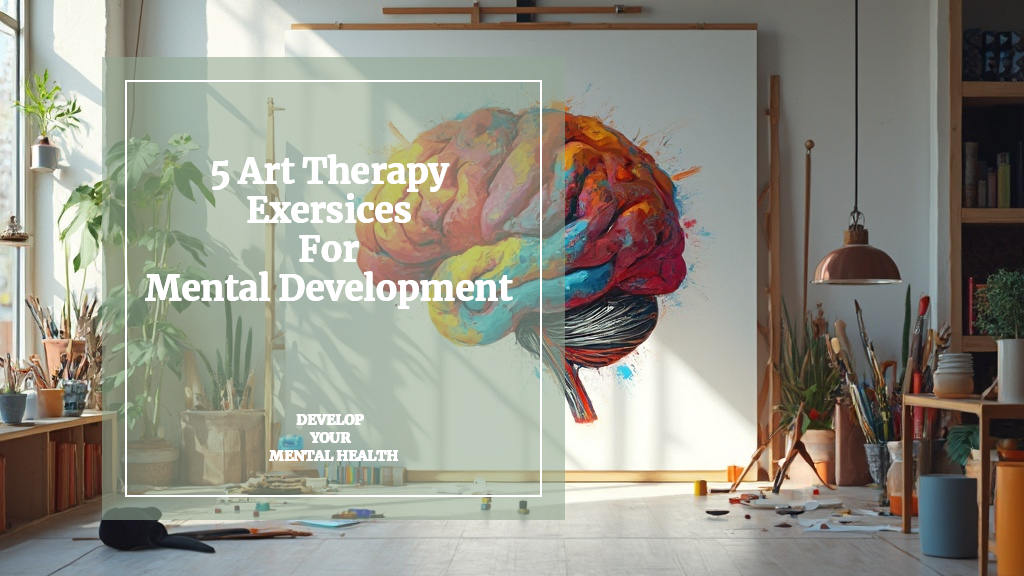
Table of Contents
Introduction to Art Therapy and Mental Development
Art therapy has emerged as a powerful tool for promoting mental development and emotional well-being. By engaging in creative activities, individuals can explore their thoughts, feelings, and experiences in a non-verbal, expressive manner. This blog post will delve into five effective art therapy exercises that can significantly contribute to mental development, helping individuals enhance their cognitive abilities, emotional intelligence, and overall psychological health.
The Art Therapy Practitioner course offers comprehensive training in various art therapy techniques, including the exercises we’ll explore in this post. Whether you’re a mental health professional looking to expand your skillset or an individual interested in personal growth, understanding these exercises can provide valuable insights into the transformative power of art therapy.
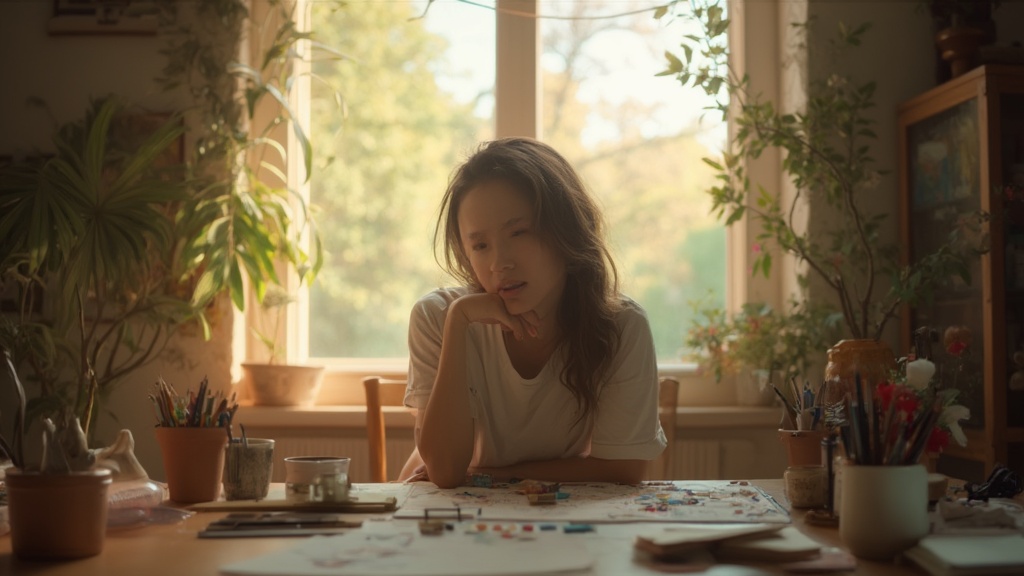
Before we dive into the specific exercises, it’s important to note that art therapy is not about creating masterpieces or having artistic talent. Instead, it focuses on the process of creation and self-expression. As we explore each exercise, remember that the goal is to engage with the creative process and allow it to facilitate personal insights and growth.
For those interested in learning more about the professional aspects of art therapy, our guide on art therapy certification and licensing provides valuable information on pursuing a career in this field.
1. Mandala Drawing for Focus and Self-Awareness
Time Required: 30-60 minutes
Materials Needed: Paper, colored pencils or markers, compass (optional)
Mandala drawing is a powerful art therapy exercise that promotes focus, self-awareness, and inner calm. Originating from ancient spiritual practices, mandalas are circular, symmetrical designs that represent wholeness and unity. Creating a mandala can be a meditative process that allows individuals to explore their inner world and achieve a sense of balance.
How to Create a Mandala:
- Begin with a blank sheet of paper and draw a circle in the center. You can use a compass or trace around a circular object.
- Start from the center of the circle and work your way outwards, adding patterns, shapes, and designs.
- Use colors intuitively, letting your emotions guide your choices.
- Continue adding details until you feel the mandala is complete.
- Take a moment to reflect on your creation and the feelings it evokes.
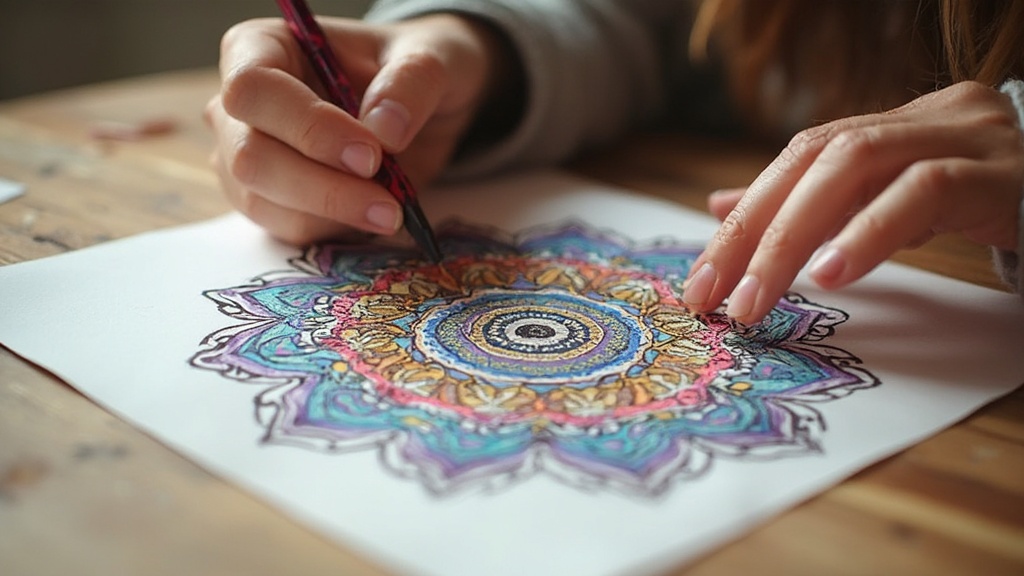
Mandala drawing can be particularly beneficial for individuals dealing with anxiety or those seeking to improve their concentration. The repetitive nature of creating patterns can induce a state of flow, helping to quiet the mind and reduce stress. For more insights on how art therapy can aid in stress reduction, check out our article on the benefits of adult coloring for stress.
Benefits:
- Enhances focus and concentration
- Promotes self-reflection and self-awareness
- Reduces anxiety and stress
- Improves fine motor skills
- Encourages creative expression
Research published in the Art Therapy: Journal of the American Art Therapy Association suggests that creating mandalas can significantly reduce symptoms of anxiety and improve overall mood. This makes mandala drawing an excellent tool for mental development and emotional regulation.
2. Expressive Painting for Emotional Release
Time Required: 45-90 minutes
Materials Needed: Canvas or large paper, acrylic paints, paintbrushes, water container, palette
Expressive painting is a freeing and cathartic art therapy exercise that allows individuals to release emotions through spontaneous brush strokes and color choices. This technique is particularly effective for those who struggle with verbal expression or have difficulty processing complex emotions.
Steps for Expressive Painting:
- Set up your painting area with all necessary materials.
- Take a few deep breaths to center yourself.
- Choose colors intuitively based on your current emotional state.
- Begin painting without a specific plan or image in mind. Let your emotions guide your movements.
- Experiment with different brush strokes, textures, and paint application techniques.
- Continue painting until you feel a sense of completion or release.
- Step back and reflect on your creation and the emotions it represents.
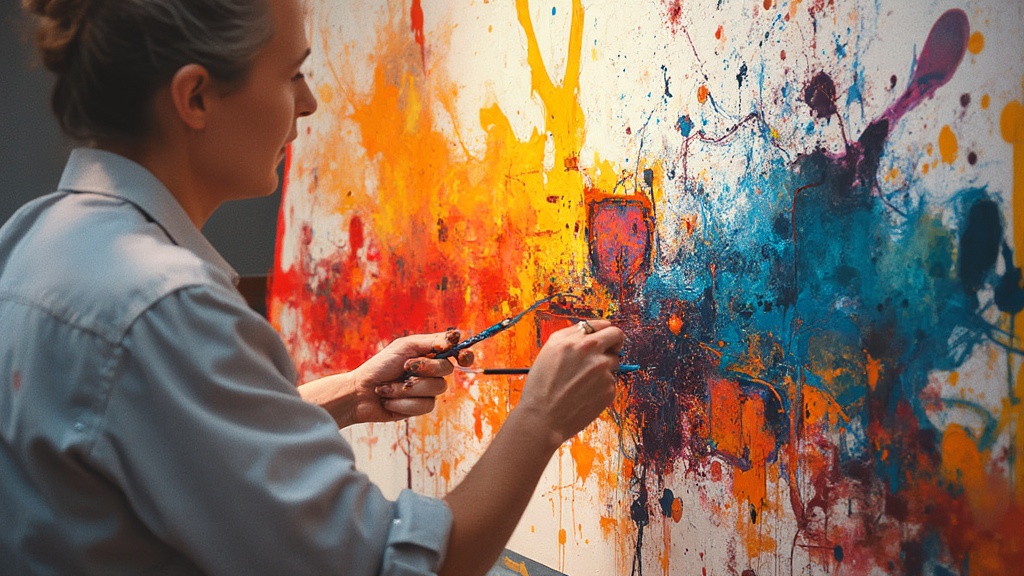
Expressive painting can be particularly beneficial for individuals dealing with depression or unresolved emotional issues. The act of freely applying paint to a canvas can serve as a powerful outlet for pent-up feelings and can lead to profound insights. For more specific techniques on using art therapy to address depression, our guide on art therapy activities for depression offers valuable resources.
Benefits:
- Facilitates emotional release and catharsis
- Improves emotional awareness and regulation
- Reduces symptoms of depression and anxiety
- Enhances self-expression skills
- Boosts creativity and problem-solving abilities
A study published in the Journal of the American Art Therapy Association found that expressive painting can significantly reduce negative mood and increase positive emotions in participants. This underscores the potential of this exercise in promoting emotional well-being and mental development.
For those interested in exploring more ways to express emotions through art, our article on how to express emotions through art provides additional techniques and insights.
3. Collage Making for Self-Discovery
Time Required: 60-120 minutes
Materials Needed: Magazines, scissors, glue, large paper or poster board
Collage making is a versatile art therapy exercise that encourages self-discovery and personal growth. By selecting and arranging images, words, and textures from various sources, individuals can create a visual representation of their thoughts, feelings, and aspirations.
Steps for Creating a Self-Discovery Collage:
- Gather a variety of magazines, newspapers, and other printed materials.
- Choose a theme for your collage (e.g., “My ideal future,” “Things that bring me joy,” or “My inner world”).
- Browse through the materials and cut out images, words, and patterns that resonate with your theme.
- Arrange the cut-outs on your paper or board without gluing, experimenting with different layouts.
- Once satisfied with the arrangement, glue the pieces in place.
- Reflect on your completed collage and journal about the insights it provides.
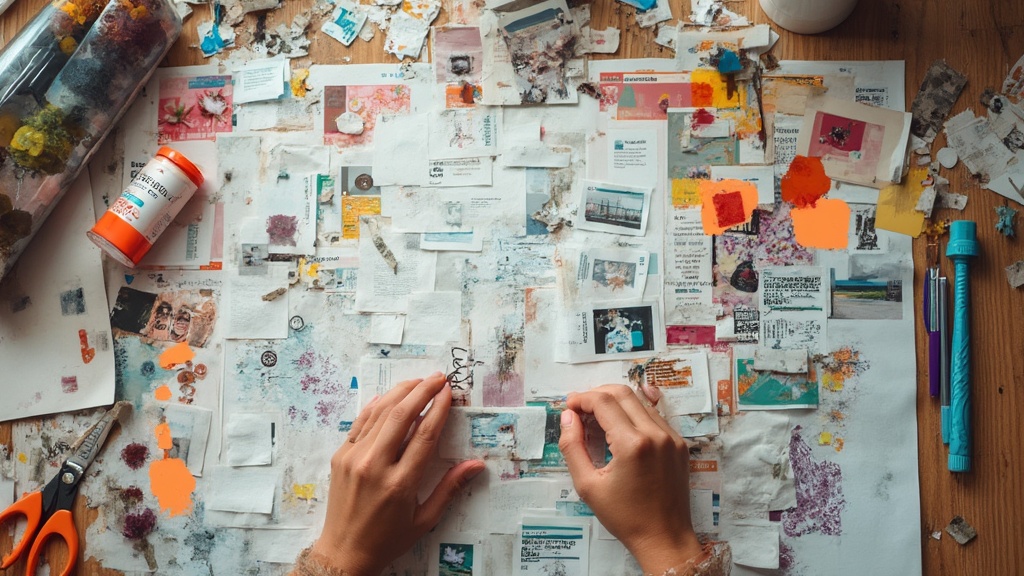
Collage making can be particularly effective for individuals exploring their identity, setting life goals, or working through transitions. The process of selecting and combining diverse elements can reveal subconscious thoughts and desires, leading to greater self-awareness.
Benefits:
- Enhances self-awareness and personal insight
- Promotes goal-setting and visualization
- Improves decision-making skills
- Encourages creative problem-solving
- Facilitates communication of complex ideas and emotions
Research published in the Journal of Creativity in Mental Health suggests that collage-making can significantly improve self-esteem and foster a sense of empowerment among participants. This makes it an excellent tool for personal development and mental well-being.
For those interested in exploring more creative approaches to self-discovery and empowerment through art therapy, our article on fun and empowerment through art therapy offers additional insights and techniques.
4. Clay Sculpting for Stress Relief
Time Required: 45-90 minutes
Materials Needed: Air-dry clay or modeling clay, sculpting tools (optional), work surface
Clay sculpting is a tactile and grounding art therapy exercise that can be particularly effective for stress relief and emotional regulation. The physical act of molding and shaping clay provides a direct outlet for tension and anxiety, while also promoting mindfulness and focus.
Steps for Clay Sculpting Exercise:
- Begin by kneading the clay to warm it up and make it pliable.
- Close your eyes and focus on your breathing for a few moments.
- With eyes still closed, start molding the clay, letting your hands move intuitively.
- Open your eyes and continue shaping the clay, allowing your emotions to guide the form.
- If desired, use sculpting tools to add details or textures.
- Once complete, take time to observe your creation from different angles.
- Reflect on the process and the emotions that arose during the sculpting.
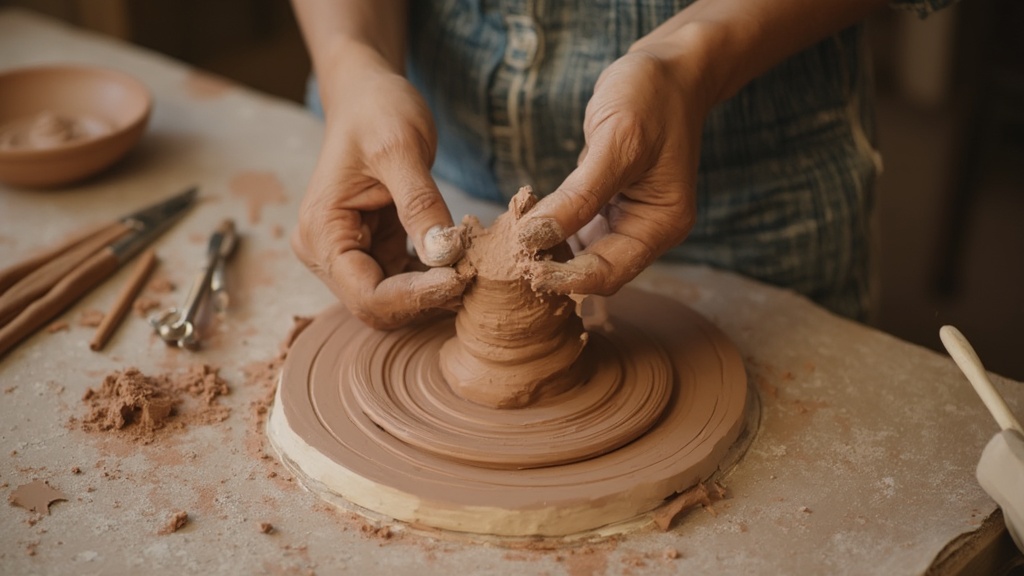
Clay sculpting can be particularly beneficial for individuals dealing with high stress levels, anxiety, or those who have difficulty expressing emotions verbally. The tactile nature of clay work can help ground individuals in the present moment and provide a sense of control.
Benefits:
- Reduces stress and anxiety
- Improves fine motor skills and hand-eye coordination
- Enhances mindfulness and present-moment awareness
- Facilitates emotional expression and release
- Boosts self-esteem through creative accomplishment
A study published in the Journal of Clinical Psychology found that clay sculpting can significantly reduce symptoms of anxiety and improve overall mood in participants. This underscores the potential of this exercise in promoting emotional well-being and stress management.
For those interested in exploring more ways to use art therapy for stress relief, our 50 Art Therapy Exercises for Children, Adults, and Seniors guide offers a comprehensive collection of techniques suitable for various age groups and stress-related issues.
5. Art Journaling for Personal Growth
Time Required: 30-60 minutes per session (ongoing practice)
Materials Needed: Journal or sketchbook, various art supplies (e.g., pens, markers, watercolors, collage materials)
Art journaling is a versatile and ongoing art therapy exercise that combines visual art-making with reflective writing. This practice allows individuals to document their thoughts, feelings, and experiences in a creative and personalized way, promoting self-reflection and personal growth over time.
Steps for Starting an Art Journal:
- Choose a journal or sketchbook that feels comfortable and inspiring to use.
- Gather a variety of art supplies that you enjoy working with.
- Begin each entry by setting an intention or focusing on a specific theme or emotion.
- Combine art-making (drawing, painting, collage) with written reflections on the same page.
- Allow yourself to experiment with different techniques and styles.
- Reflect on your entries regularly to track personal growth and insights.
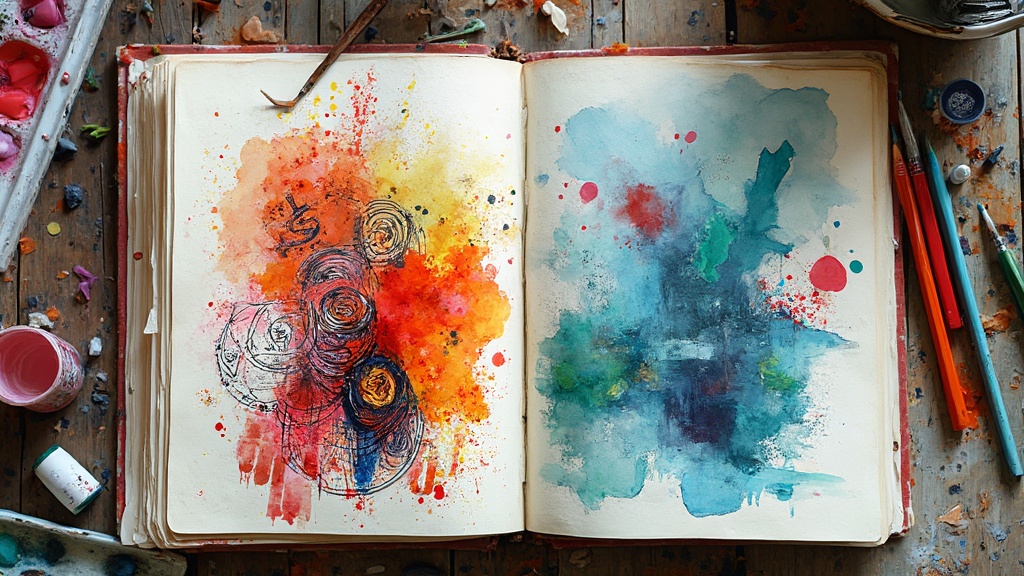
Art journaling can be particularly beneficial for individuals seeking to improve self-awareness, process complex emotions, or work through personal challenges. The combination of visual and written expression allows for a deeper exploration of one’s inner world.
Benefits:
- Enhances self-reflection and self-awareness
- Provides a safe outlet for processing emotions
- Improves creative problem-solving skills
- Promotes mindfulness and present-moment awareness
- Servesas a record of personal growth and transformation
Research published in the Journal of Poetry Therapy indicates that regular art journaling can lead to increased emotional regulation, improved mood, and enhanced self-understanding. This makes it an excellent tool for ongoing personal development and mental well-being.
For those interested in exploring art journaling as a tool for personal growth, our Introduction to Art Therapy course offers valuable insights and techniques to get started.
Conclusion
The five art therapy exercises explored in this blog post – mandala drawing, expressive painting, collage making, clay sculpting, and art journaling – offer powerful tools for mental development, emotional well-being, and personal growth. Each exercise provides unique benefits, from stress relief and emotional release to enhanced self-awareness and improved cognitive function.
By incorporating these creative practices into your routine, you can tap into the transformative power of art therapy and experience its positive impact on your mental health and overall well-being. Remember, the focus is on the process of creation rather than the final product, allowing you to explore your inner world freely and without judgment.
Whether you’re a mental health professional looking to expand your therapeutic toolkit or an individual seeking personal growth, these art therapy exercises offer accessible and effective ways to promote mental development and emotional healing.
For those interested in delving deeper into the world of art therapy, consider exploring our comprehensive Art Therapy Practitioner course. This program offers in-depth training on various art therapy techniques and their applications, equipping you with the skills to harness the power of creativity for mental health and personal development.
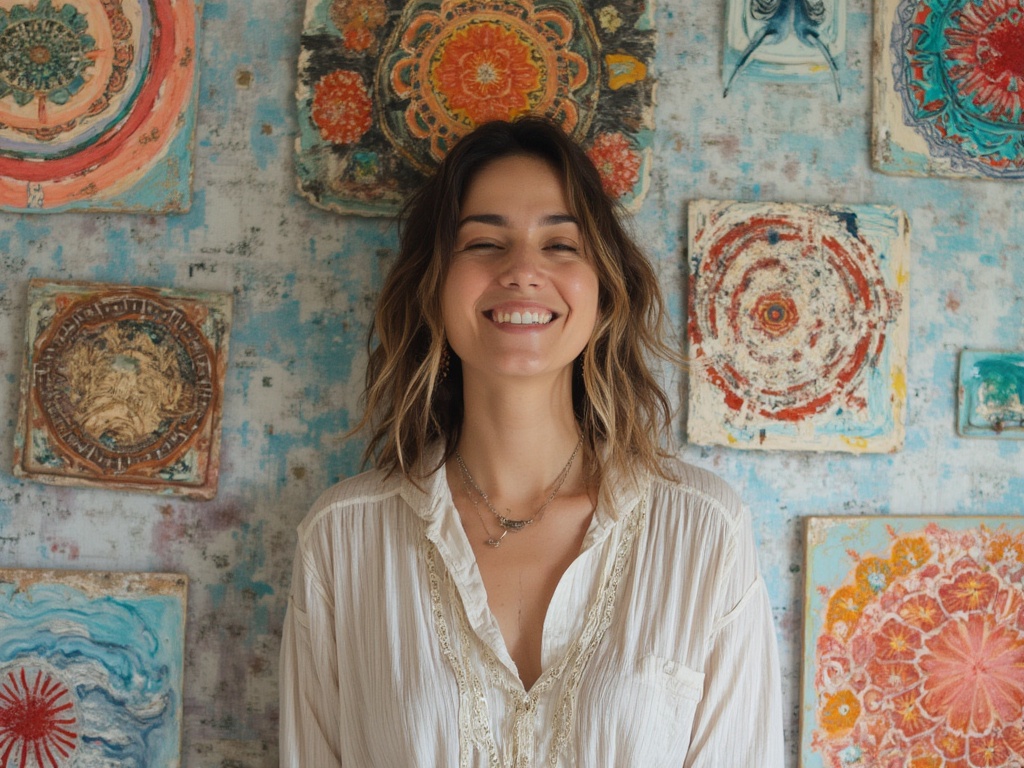

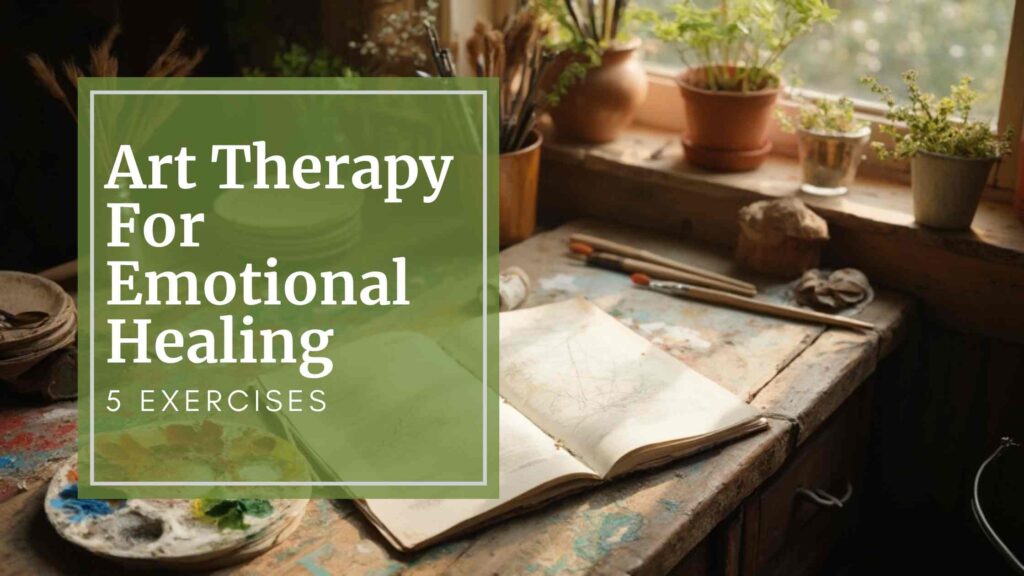
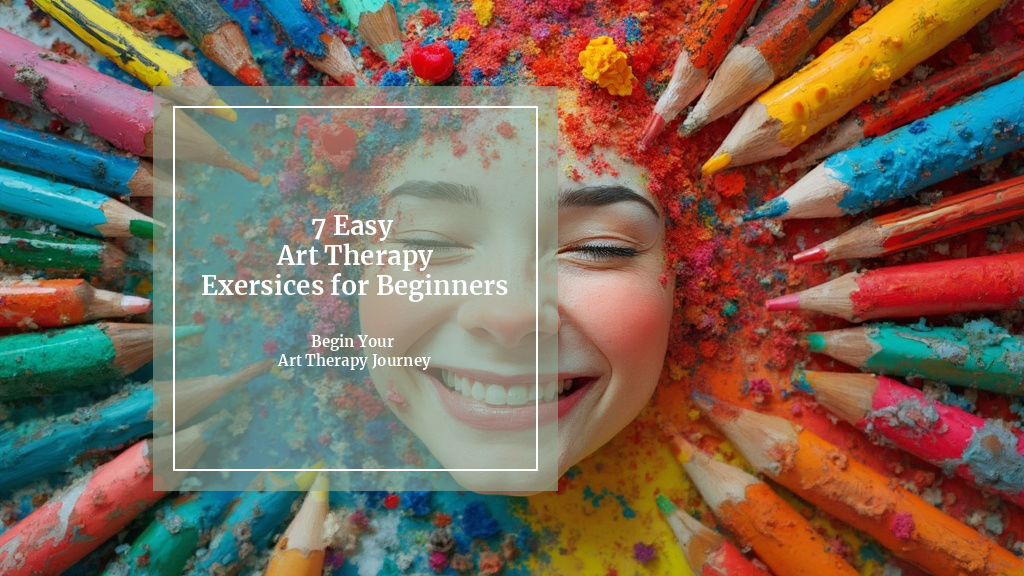
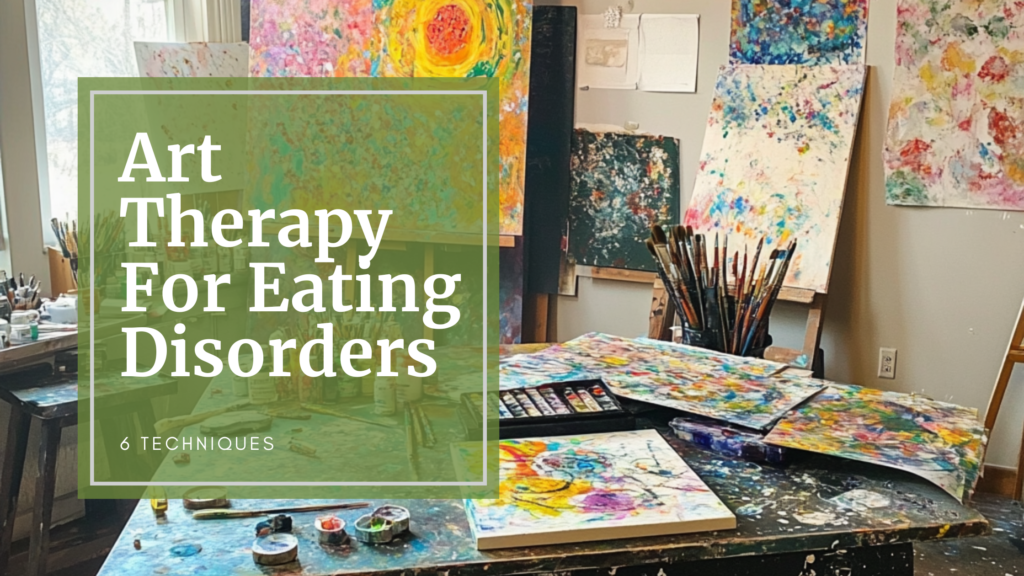
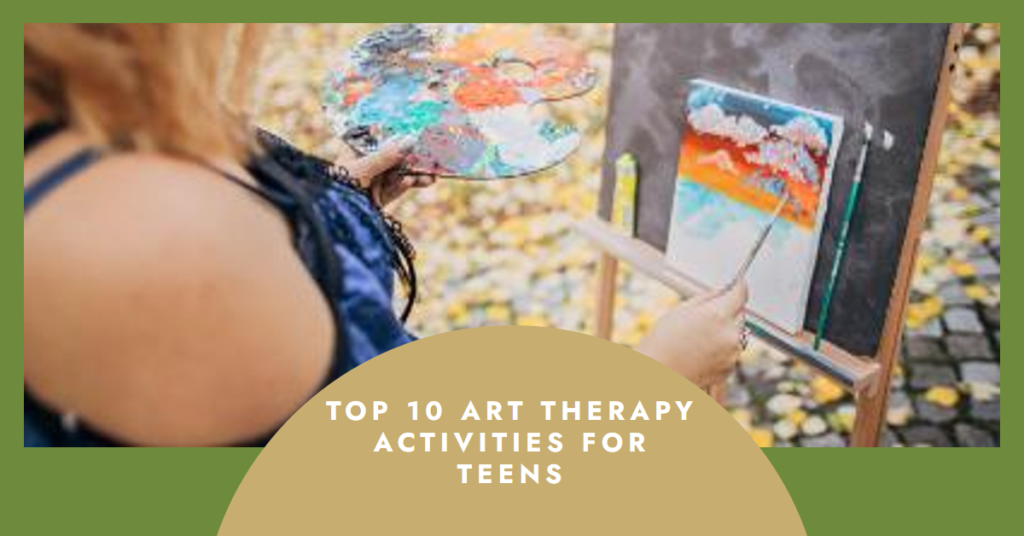
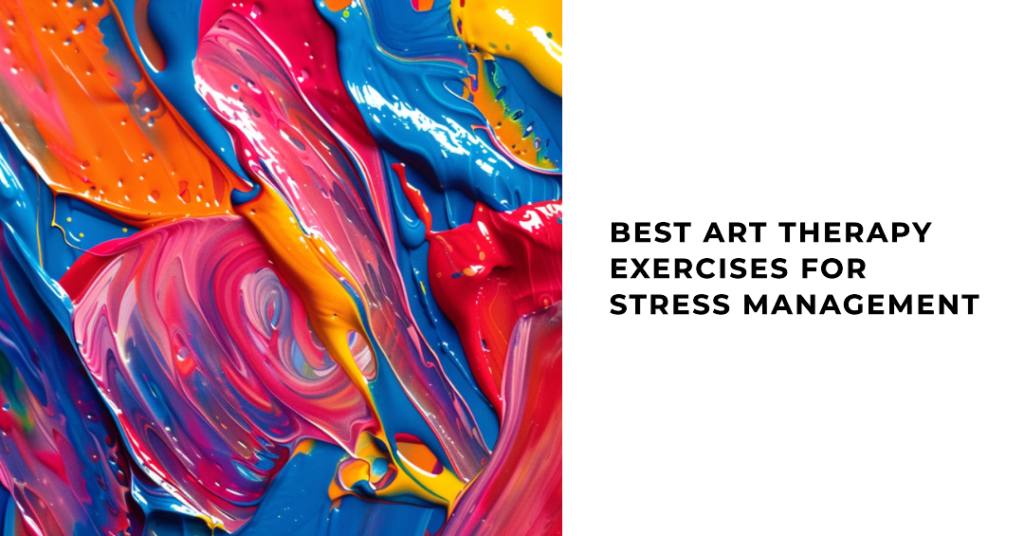





Responses